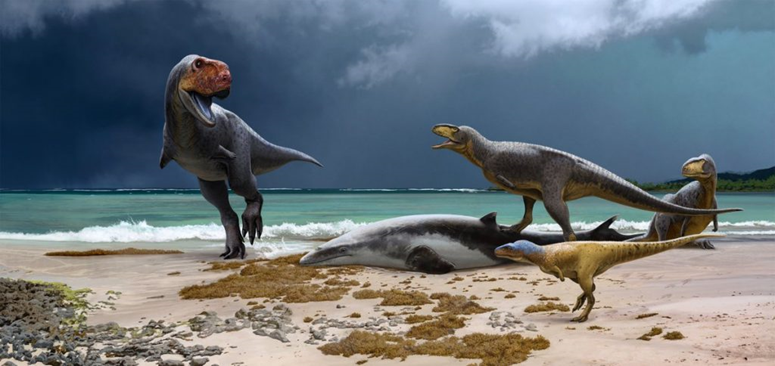New fossils of dinosaurs that became extinct 66 million years ago were found in Morocco

Paleontologists recently discovered in Morocco the fossilized remains of two Tyrannosaurus cousins, exactly in a basin in the Ouled Abdoun Basin, also known as the Khouribga Basin, which is a phosphate sedimentary basin located in Morocco near the city of Khouribga.
According to the “Science News” website, these two new species of dinosaurs lived about 66 million years ago, and had a short nose and very short arms. They belonged to the abelisauridae, a family of meat-eating dinosaurs that were counterparts to the tyrannosaurid dinosaurs of the Northern Hemisphere.
One species was about 2.5 meters long and represented by a fossilized foot bone found near Menja Sidi Daoui. The other one was found near Sidi Shanan, and is about 5 meters long.

"The surprising thing here is that these are marine basins," said Nick Longrich, a paleontologist at the University of Bath. Pointing out that “it is a shallow tropical sea full of plesiosaurs, mosasaurs and sharks. It is not a place where you would expect to find a lot of dinosaurs, but we find them.”
Fossils indicate that up to three species of abelisaurids coexisted in Morocco about 66 million years ago, showing that dinosaurs were highly diverse in North Africa before the mass extinction at the end of the Cretaceous period.
“Certainly the end of the Cretaceous in western North America looks less diverse at the end,” Dr. Longrich said. Then he added: “But this is only a small part of the world. . "It's not clear that you can generalize from Wyoming and Montana dinosaurs to the entire world."

The results of the research team were published in the journal “CretaceousResearch”, (a scientific journal that publishes research and studies related to the Cretaceous time period in paleontology and earth sciences.)
Professor Noureddine Jalil, a paleontologist at the Natural History Museum and Cadi Ayyad University, said: “When T. rex reigned as a huge predator in North America, abelisaurs were at the top of the food chain in North Africa.”
He pointed out that the remains of dinosaurs, despite their rarity, give the same messages as the remains of the most abundant marine reptiles. "They tell us that just before the Cretaceous-Paleogene crisis, biodiversity was not declining, on the contrary, it was diversifying," he said.
Source: websites

